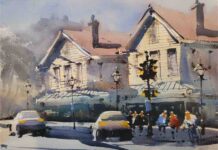
“My portrait paintings are my real love – connecting with the essence of a person through their expression, their pose, their placement in the composition,” Pam Wenger. “I work with a transparent palette and paint exclusively on hot-pressed paper. One of the things that drew me to watercolor was the spontaneous look that an artist can achieve if a subject is not overworked.”
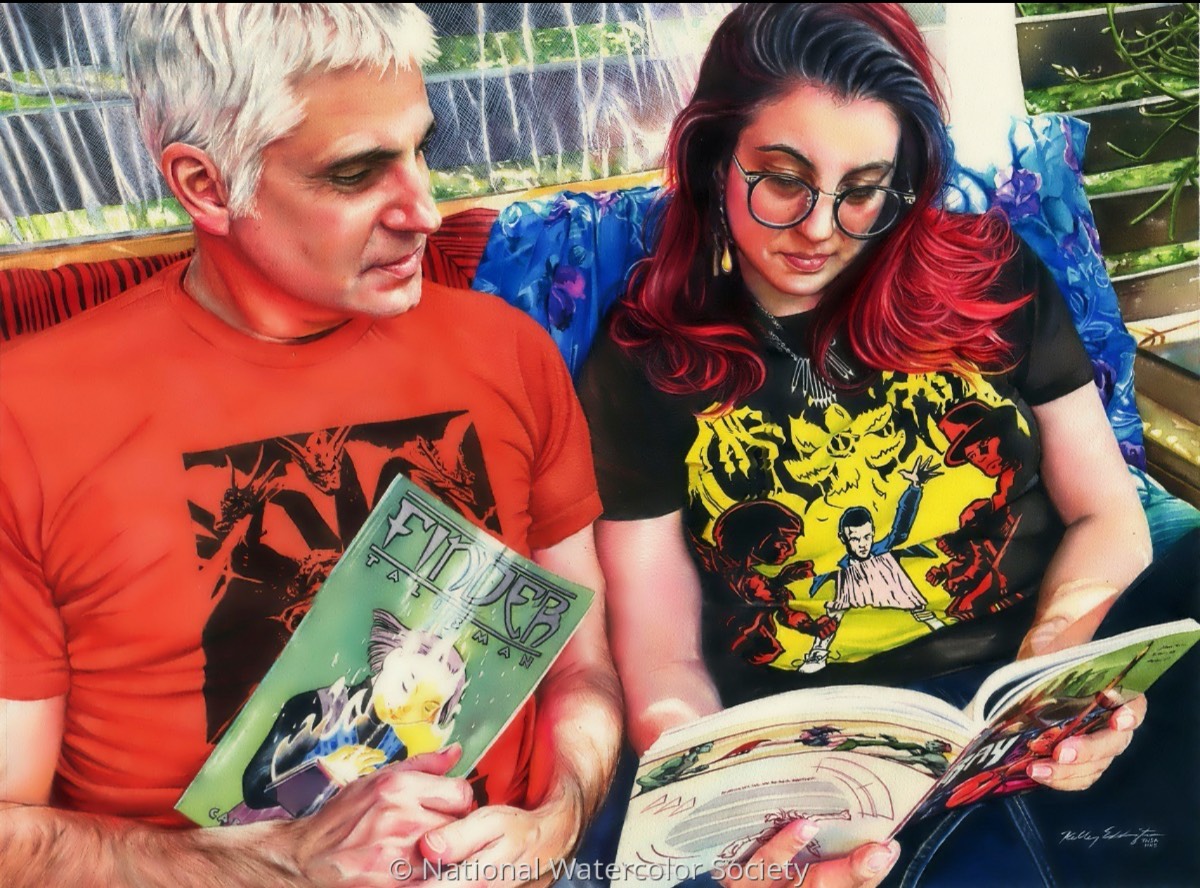
“My approach to painting is meticulous and time-consuming, and I think this helps my viewers understand how important my subjects are to me,” says Kelly Eddington. “If mundane objects and everyday people are worthy of my extended, intense study, then maybe everything my audience encounters in their daily lives deserves a second look.”
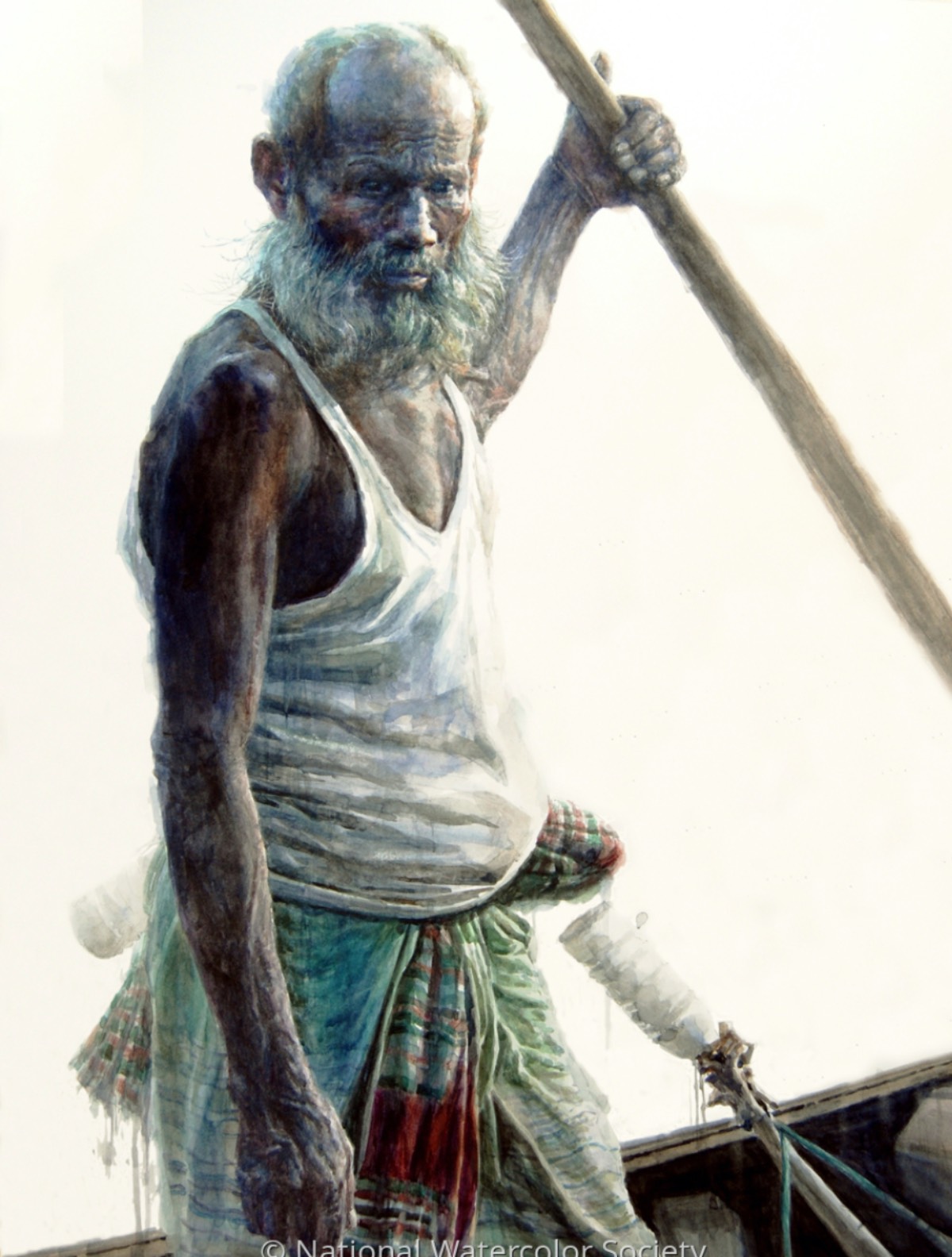
“I paint with an eye towards the emotional experience of my characters: I want to create an intimate relationship between the viewer and the subject,” says Dongfeng Li. “Through use of pose, body language and emotional expression.”
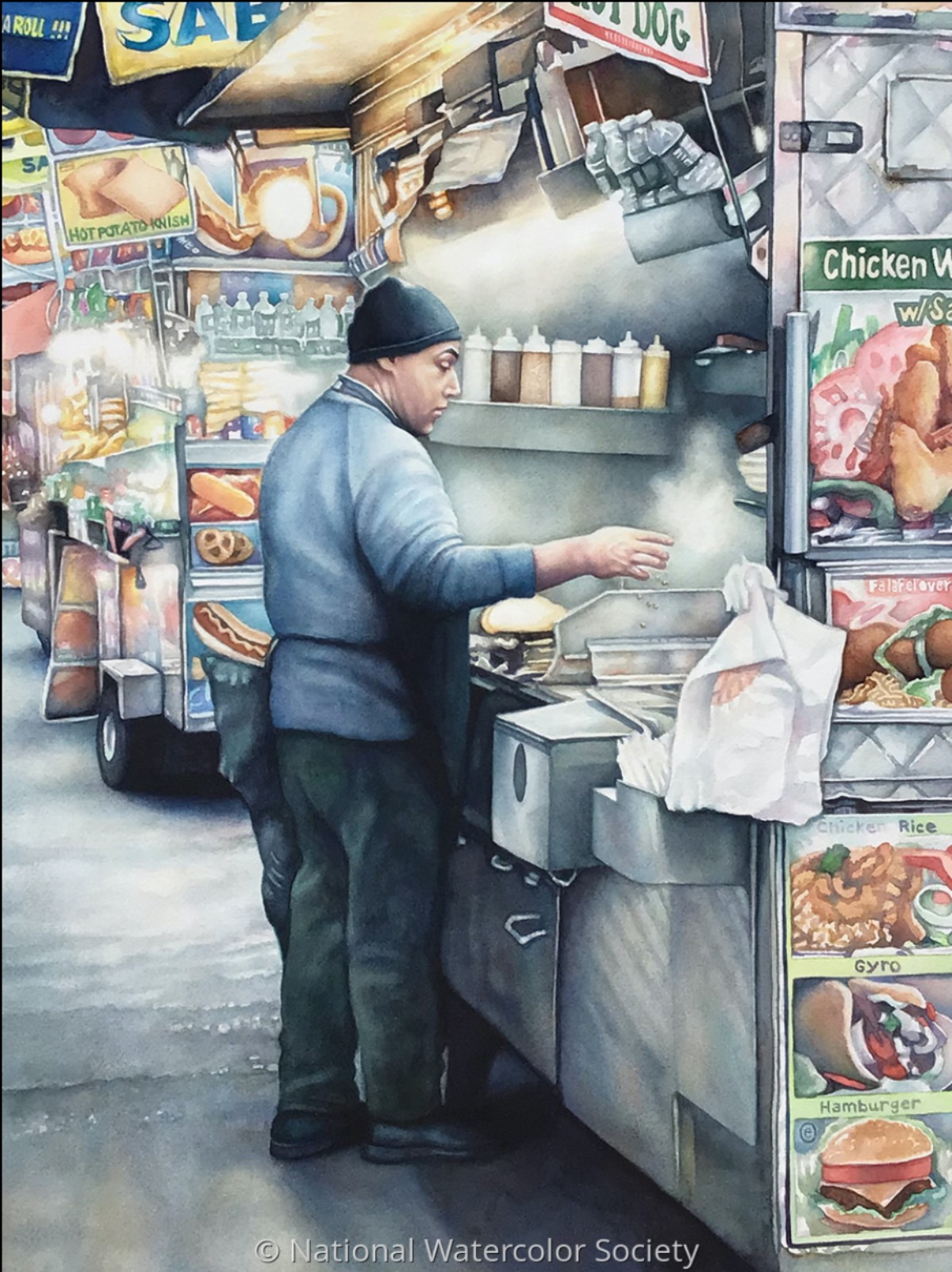
“The medium of watercolor allows me to convey my personality as both an artist and an observer,” says Elizabeth Oberman. “I enjoy working from the figure and painting people in their environment. As an avid people watcher, I feel the world would be a boring place if everyone was the same and I am drawn to what makes each of us unique. I enjoy the challenge of painting a likeness; but strive to capture the character of my subjects and the stories they tell. As a watercolorist, I work traditionally using transparent watercolors and primarily on 140-lb. Arches cold-pressed paper. I like the transparency of the medium and love playing with color. I mix many of my pigments directly on the surface so they can mingle together in the water.”

“I enjoy painting portraits, especially of children,” says Kathleen Eichler. “Their honest reaction is written all over their faces without any words needed. I love watching a person emerge from the surface as I work layer upon layer, describing the textures and shapes. This portrait was done on Aquabord, which was new to me.”
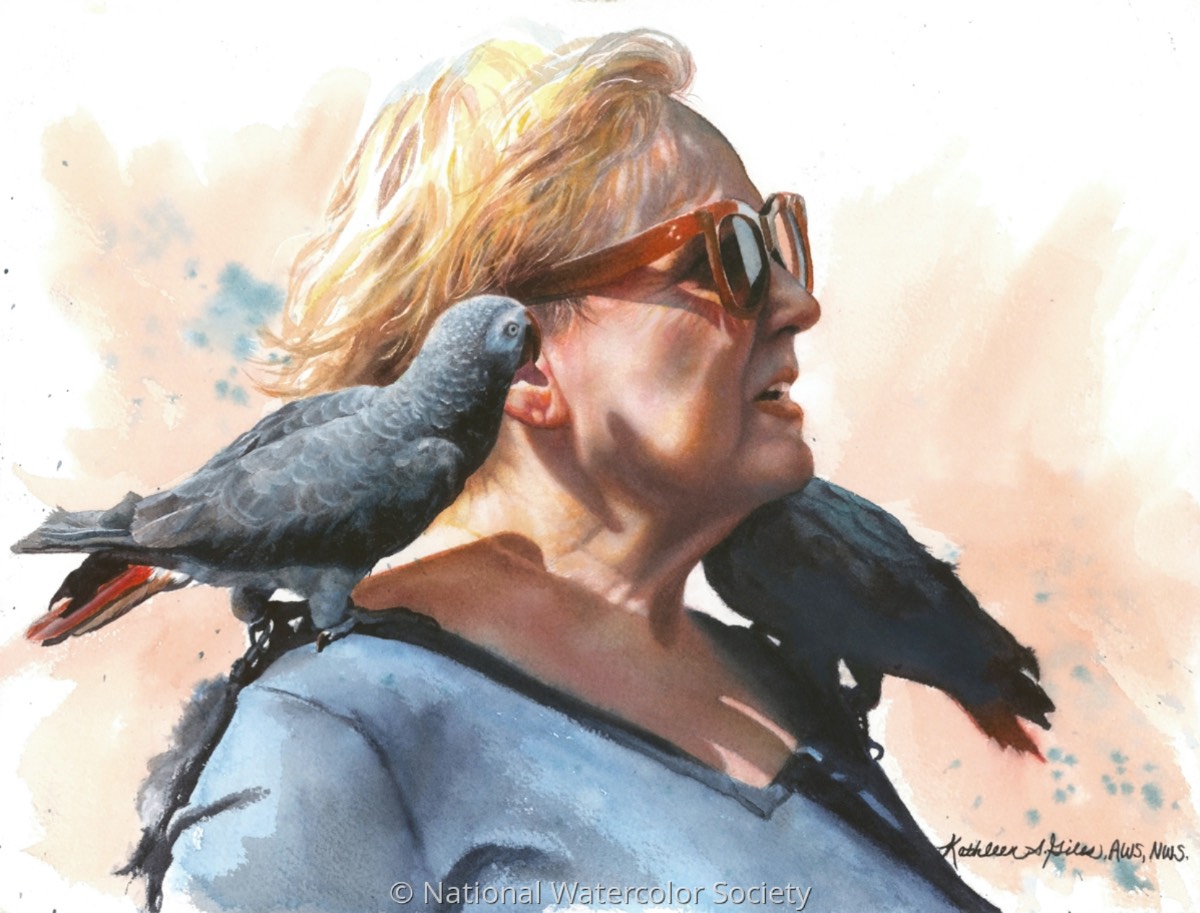
“I paint watercolors that capture a moment in time and tell a story or express an emotion,” says Kathleen Giles.” I saw this woman walking with her birds and snapped a quick picture. I simplified the background and painted her quickly in a looser style. I thought it looked like the bird was talking to her, and it added a bit of levity. Maybe he was…”

“Visual expression is one of my life’s joys,” says Lori Hess. “The creative life is a journey. Learning that the journey itself is the best part has taken many years. My work focuses on the face and figure. Emphasis on listening more closely to my intuition during the process is a continual goal.”
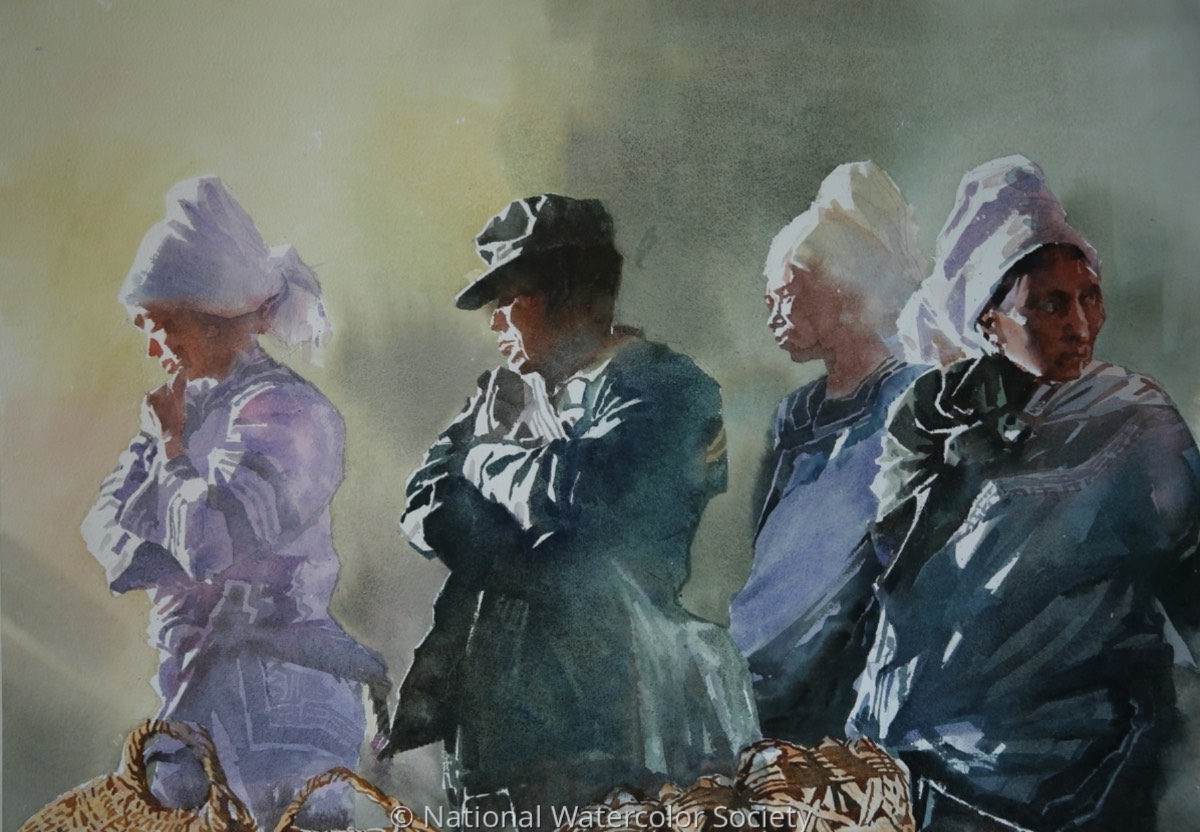
“The audiences can clearly feel that I am a relatively conservative artist by exploring my watercolor,” says Xiao Xing Hu. “The themes of my work come from expressions of people and the scenes and events I encounter. I have always been attracted to the simple things happening in life. Sharing feelings through my brush has become my greatest pleasure. The creative process is fun, but also painful. Whenever I roll out a new drawing paper, I always expect it to become my best work. Such an expectation is difficult if I can’t reach what I wanted: I can have a hard time extricating my emotions from it. However, when a work meets my satisfaction, I am ecstatic. I believe that when audiences see my works, they will also feel my joy and hardships.”

“I was drawn to how this moment of physical connection between this couple reflected a lifetime of connectedness and purposely left out details other than the one window to give them context,” says Camellia Mim Kuo.
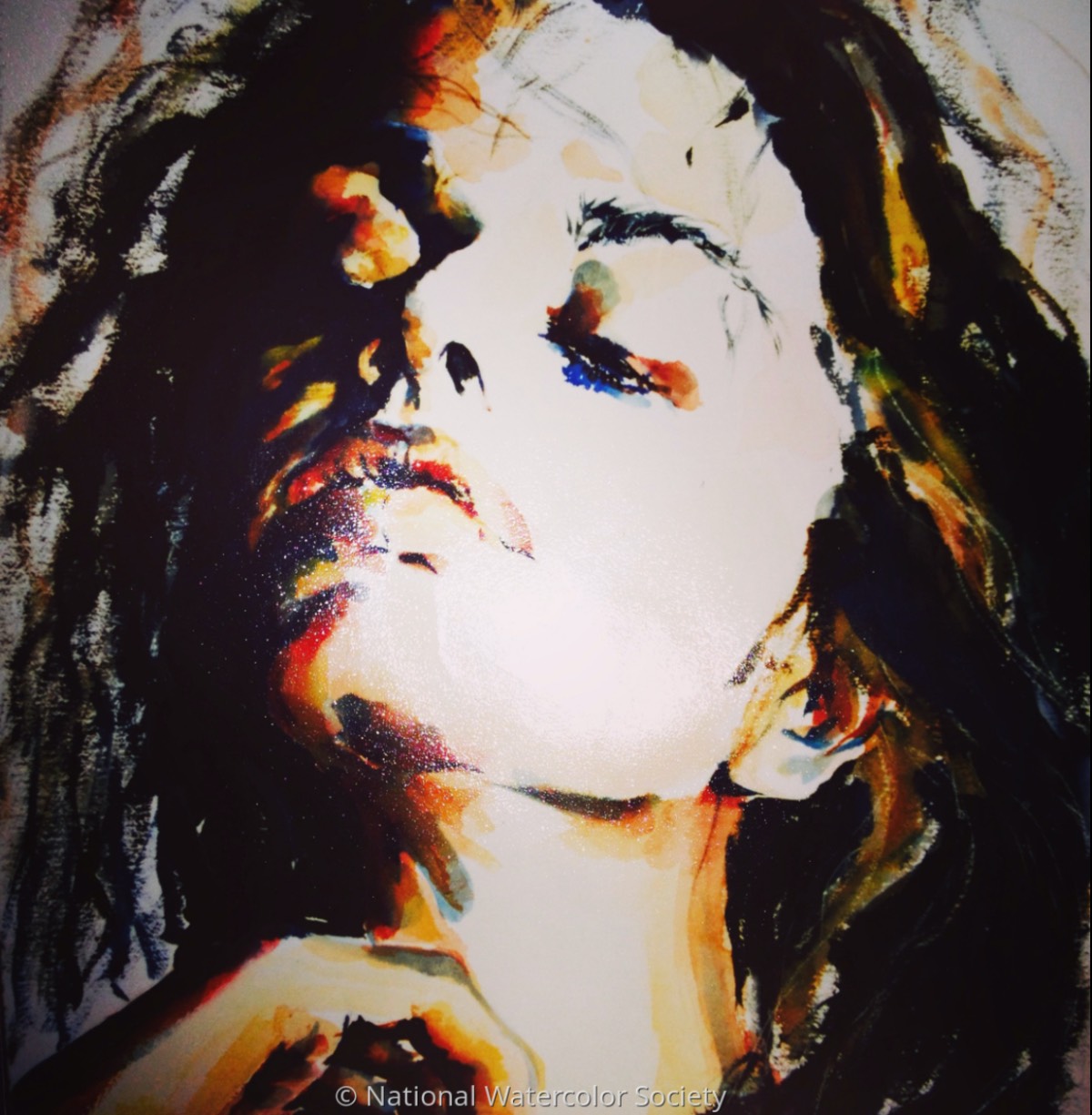
“Often unnoticed upon first glance, a first impression — that unknowingly innocent first look — can reveal so much,” says Jessica Pace-Berkeley. “For those of us — the artists who are so astute at examining faces — we see more. The drips, the unconventional layers of paint, the loose delivery of my medium only serves to help convert the immediacy of my message.”
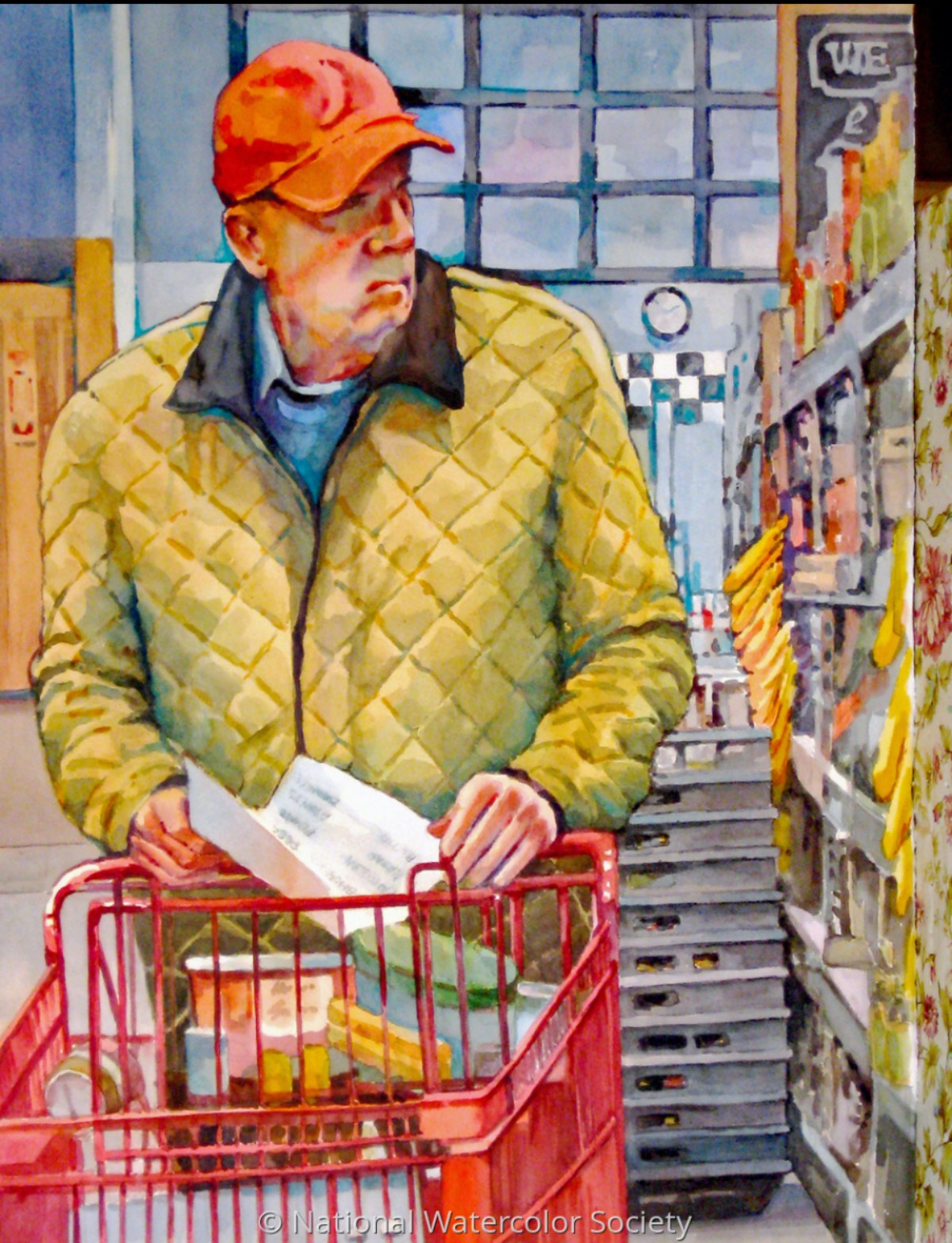
“I like painting people going about their life doing everyday things,” says Lois Wolford. “I paint on wet paper to achieve soft edges in the beginning and as the surface dries I paint more detail and harder edges.”
These and other wonderful watercolors were juried into the 2022 NWS (National Watercolor Society) Member Annual Exhibition.

